
Michael Drolet -- 2005
 |
Michael Drolet -- 2005 |
| Home |
Acoustics and Psychoacoustics |
|
|
| The Ear: |
| The ear is the organ of hearing. The outer ear or "pinna" collects sound waves and directs them into the ear canal. The pinna makes the ear directional. The ear canal conducts vibrations to the inner ear. The "eustachian tube" serves to equalise air pressure differences between the inner and outer ear. |
| The ear canal ends in the ear drum or "tympanic membrane". Sound waves entering the ear canal cause the ear drum to vibrate. A series of small bones, "ossicles" attached to the ear drum, serve as a mechanical transformer, to maximise the transfer of energy to the liquid-filled "cochlea". |
| |
| The cochlea is a spiral tube, filled with liquid and lined with small, hair-like fibres. Vibrations induced in the liquid, stimulate nerves which send information to the brain. |
| Above is a view of the cochlea, uncoiled for clarity. The lower or "basal" end is sensitive to high frequencies; while the top or "apical" end is sensitive to low frequencies. |
|
|
| Reflections from the pinna (outer ear) interfere with direct sound waves arriving at the entrance to the ear canal. The resulting interference effects give the brain information regarding the elevation of the sound source. |
| |
|
|
Source
Localisation:
|
||||||||||
|
|
| Haas effect: |
| An acoustic or electronic delay can be used to mask the apparent direction of a sound source. A sound arriving at the listener's ears within a window of 10 to 30 msec. after another, will be interpreted as a reflection. The direction of the earlier sound will be taken as the point of origin, even if the delayed sound is as much as 10 dB louder. |
| In "A" a sound is
played at equal level
on both speakers. To the listener, the sound seems to emanate
from the centre line of the speakers. In "B", the sound to the
left speaker is delayed by 20 ms. The sound will appear to come
from the direction of the right speaker, even if the left speaker is
10dB louder. |
| In a large theatre, it
may be necessary to use an array of loudspeakers to get acceptable
coverage. Here, separate speakers are used for the
orchestra and balcony seating. The balcony itself creates an
acoustic "shadow" at the rear of the orchestra. |
| To
fill in the shadow under the balcony, additional speakers can be
added. The signal to these speakers can be delayed electronically
-- 10-20
ms. longer than the acoustic delay from the main speakers. The
sound will appear to come from the main speakers, even if the level
from the under-balcony speakers is 10 dB louder. |
|
|
Modes of
Propagation:
|
| Diffraction: | |
| Refraction: |
|
|
| Transmission, Reflection and Absorption: |

|
|
|
| Development of Reverberant Field: |
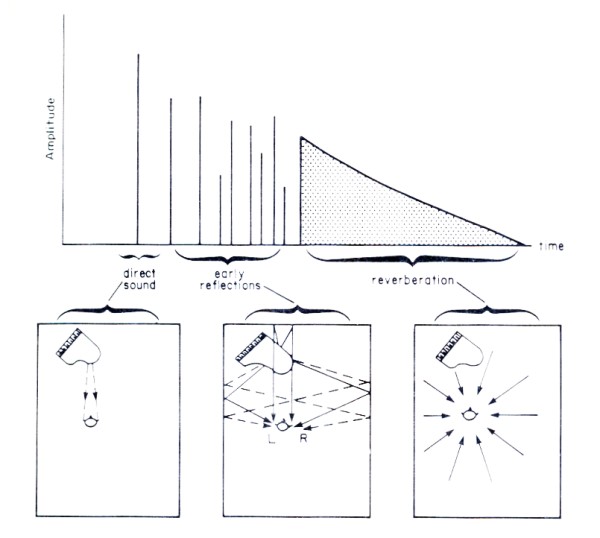 |
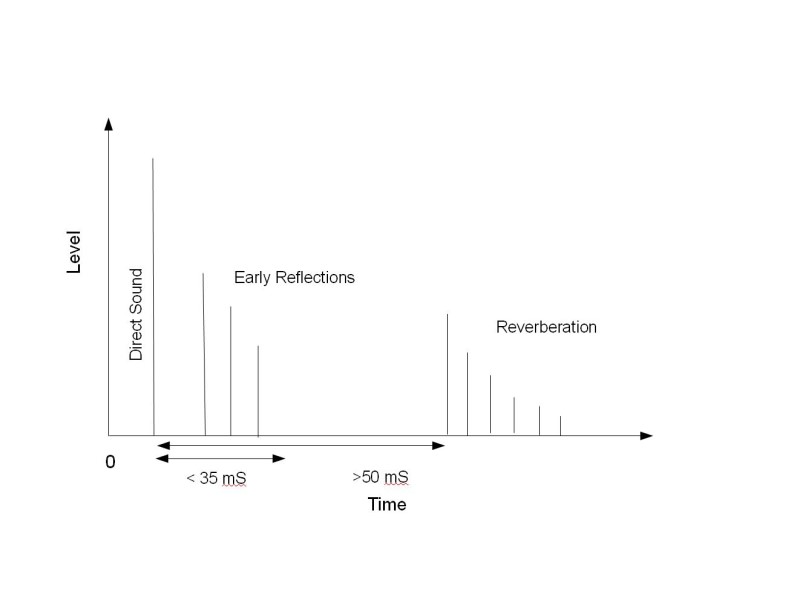 |
| Ideal reverberation times for rooms with different uses. |
|
|
| Directivity Factors of Bounded Sources | ||||||||||||||||||||
|
||||||||||||||||||||
|
|
| Directional characteristics of the human voice: |
| Horizontal( at 5 frequencies.) |
| Vertical (at 5 frequencies.) |
|
Directivity Factors of various sound sources.
|
||||||||||||||
|
|
| Inverse square law: |
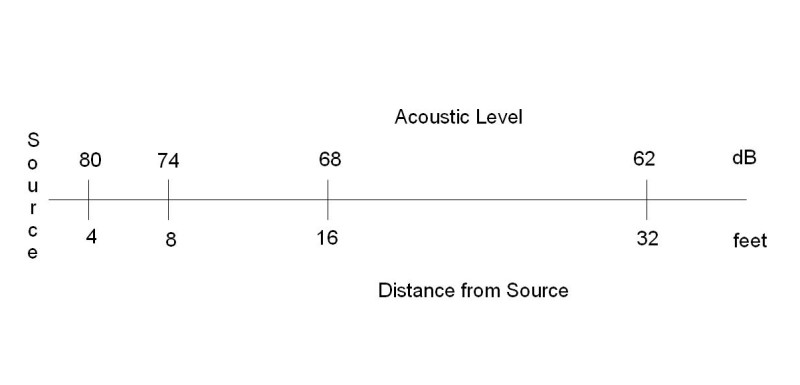 |
| The acoustic level drops 6 dB
for
each doubling (20 dB for
every factor of 10) of distance from the source. |
|
|
| Critical Distance: |
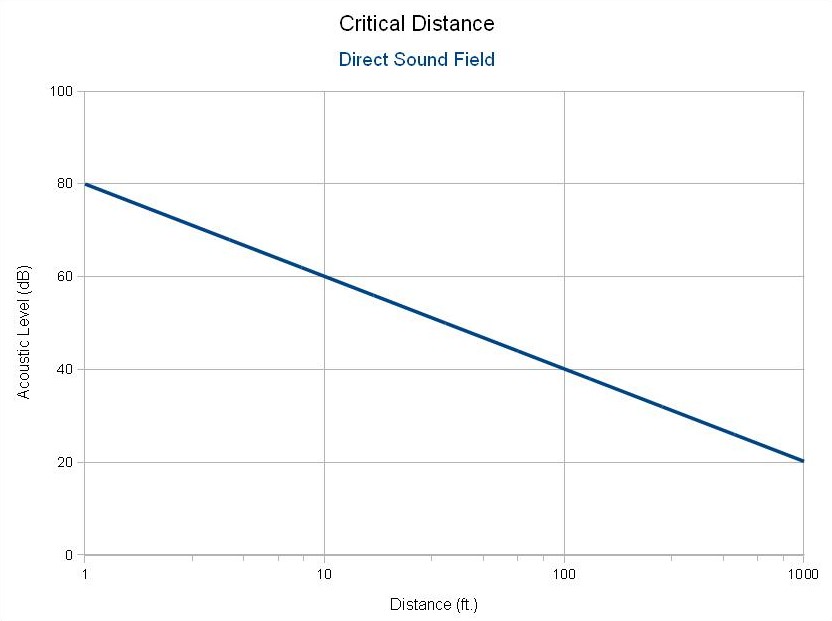 |
| Indoors or out, the direct sound
decreases with the square of the distance from the source -- 6 dB
less for every doubling, or 20 dB for every factor of 10. |
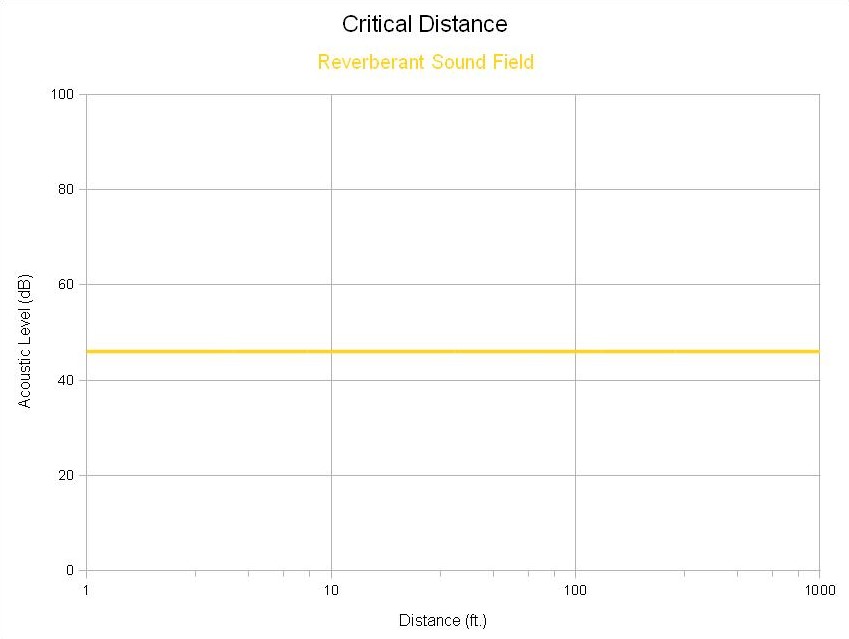 |
| The reverberant sound field
doesn't vary with distance from the source. |
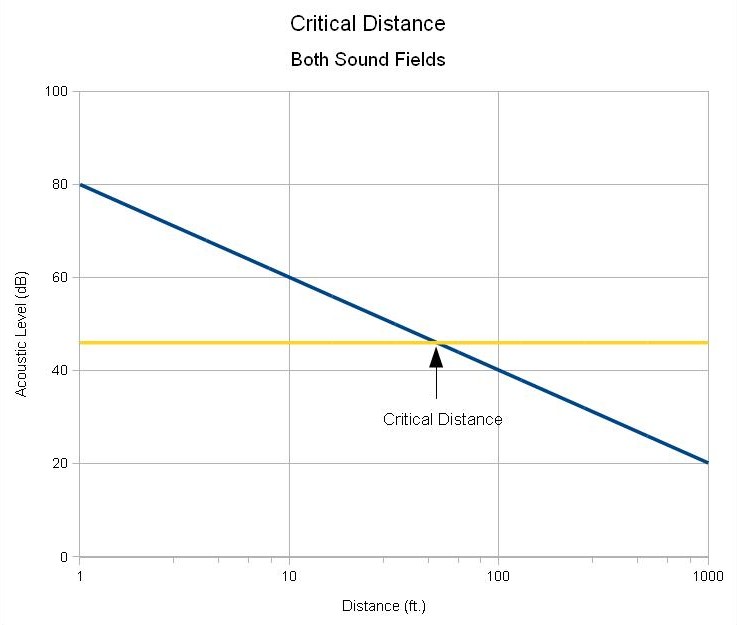 |
| At some distance from the
source, both direct and reverberant sound fields are equal in
level. We call this the critical distance.
Beyond
this
distance, the listener hears more reverberant than direct
sound. |
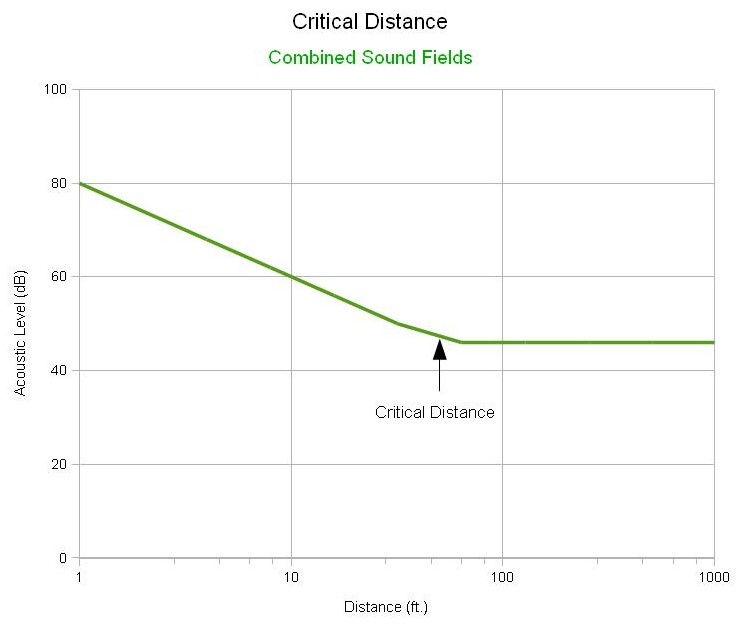 |
| The critical distance (Dc) can be
increased by increasing the directivity (Q) of the
source, or by decreasing the reverberation time (RT60) of the
room. |
|
|
| Articulation Loss: |
 |
| where: ALcons = loss of articulation (%)
15% is the maximum acceptable loss of articulation.D = distance to farthest listener (ft.) RT60 = reverberation time (sec.) V = room volume (cubic ft.) Q = directivity factor of source |
|
|
| Theatre Construction: |
| Raked seating increases intelligibility. |
| The Greeks used this
principle over 2000 years ago in their theatres. This is a view
from the top of the seating area at Epidaurus. |
|
|
| Splayed walls increase early reflections to rear of theatre. |
| Ceiling shapes and angles increase early reflections to rear of theatre. |
|
|
| Controlling rear echoes | ||||||||
|
||||||||
|
|
| Noise Criteria: | ||||||||||||||||||||||||||
|
||||||||||||||||||||||||||
|
|
| Transmission Loss: | ||||||||||||||||||
|
||||||||||||||||||
|
|
| Studio Construction: |
| Floating walls, floors and ceiling |
| Window Construction |
|
|